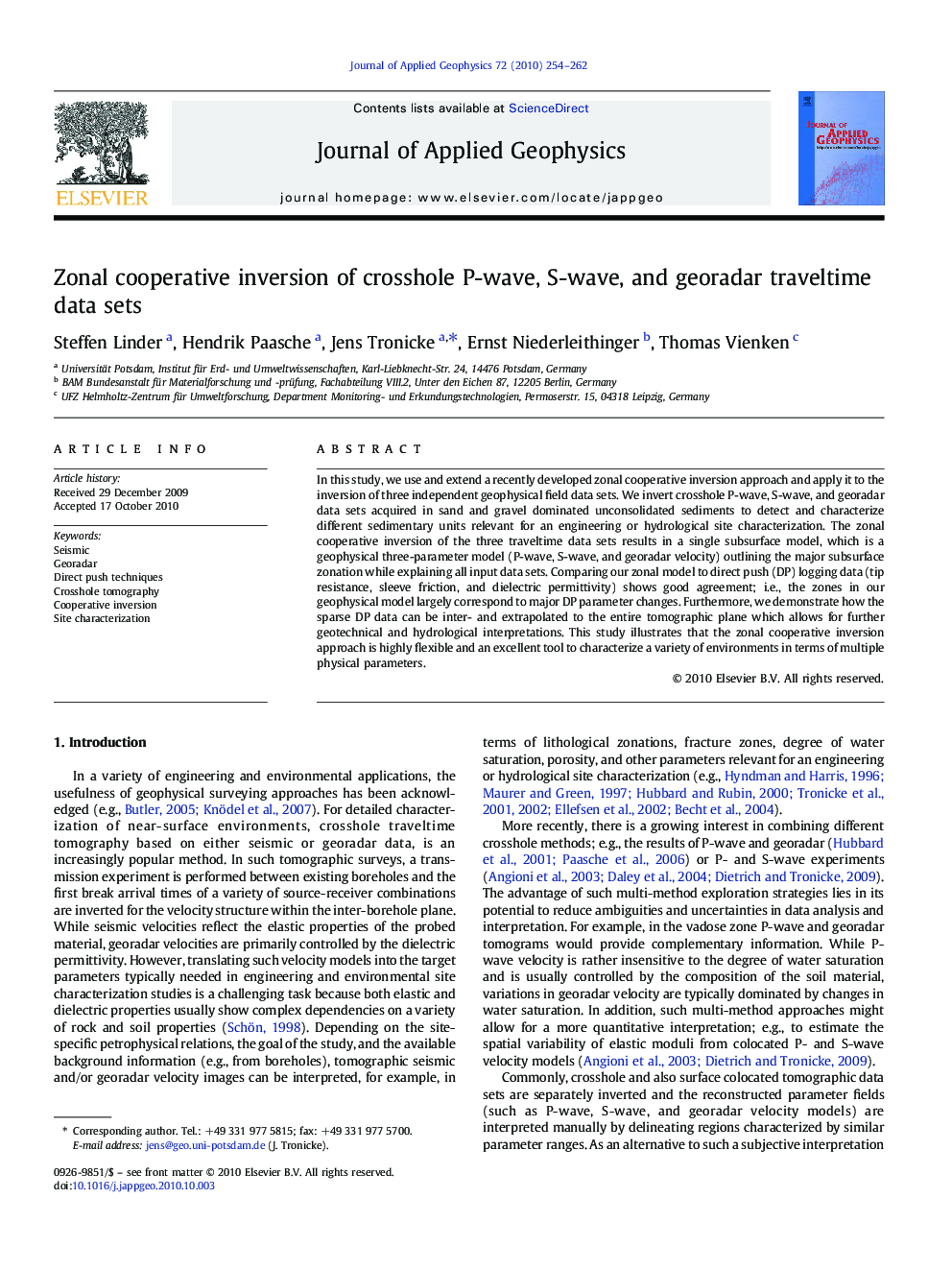| Article ID | Journal | Published Year | Pages | File Type |
|---|---|---|---|---|
| 4740749 | Journal of Applied Geophysics | 2010 | 9 Pages |
In this study, we use and extend a recently developed zonal cooperative inversion approach and apply it to the inversion of three independent geophysical field data sets. We invert crosshole P-wave, S-wave, and georadar data sets acquired in sand and gravel dominated unconsolidated sediments to detect and characterize different sedimentary units relevant for an engineering or hydrological site characterization. The zonal cooperative inversion of the three traveltime data sets results in a single subsurface model, which is a geophysical three-parameter model (P-wave, S-wave, and georadar velocity) outlining the major subsurface zonation while explaining all input data sets. Comparing our zonal model to direct push (DP) logging data (tip resistance, sleeve friction, and dielectric permittivity) shows good agreement; i.e., the zones in our geophysical model largely correspond to major DP parameter changes. Furthermore, we demonstrate how the sparse DP data can be inter- and extrapolated to the entire tomographic plane which allows for further geotechnical and hydrological interpretations. This study illustrates that the zonal cooperative inversion approach is highly flexible and an excellent tool to characterize a variety of environments in terms of multiple physical parameters.
Research Highlights►Cooperative inversion of three colocated data sets to characterize near-surface sediments. ►Resulting zonal model characterizes subsurface in terms of P-wave, S-wave, and georadar velocities. ►Resulting zonal model is evaluated and quantitatively linked to direct push data such as CPT logs.
